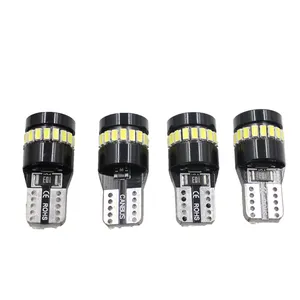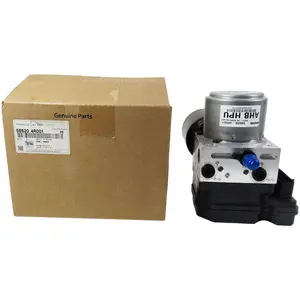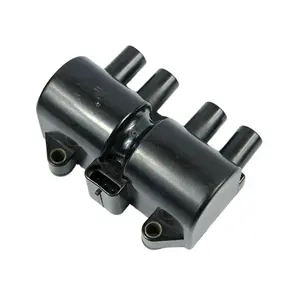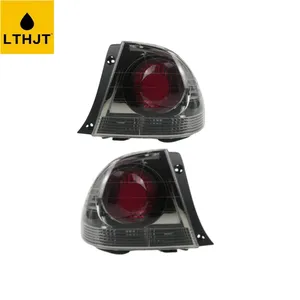Популярное в вашей отрасли






Литий-полимерная перезаряжаемая литий-602248 литий-полимерная аккумуляторная батарея 3,7 В 650 мАч 3,7 В 2.405Wh 650 мАч литий-ионная полимерная батарея
95,81 ₽ - 146,24 ₽
Минимальный заказ: 10 шт.






Индивидуальный OEM 1800 мАч 1200 мАч 850 мАч 500 мАч перезаряжаемый 103450 литий-ионный Литий-полимерный 3,7 в 2200 мАч литий-полимерный аккумулятор
55,47 ₽ - 199,69 ₽
Минимальный заказ: 100 шт.
Доставка за штуку: 219,86 ₽







Индивидуальная 18650 21700 32700 аккумуляторная батарея 12V 24V 36V 48V 60V 72V 6Ah 8Ah 10Ah 20Ah 30Ah 40Ah литий-ионная батарея
806,81 ₽ - 1 008,51 ₽
Минимальный заказ: 10 шт.
Доставка за штуку: 594,01 ₽







OEM 103040 523450 502030 402035 803450 105050 перезаряжаемый литий-полимерный аккумулятор 1800 мАч, литий-полимерный аккумулятор 3,7 в
55,47 ₽ - 199,69 ₽
Минимальный заказ: 100 шт.
Доставка за штуку: 219,86 ₽














Новый стиль, античный портативный литий-ионный мобильный источник питания, литий-ионный блок питания 12 В, 8300 мАч, литиевый аккумулятор
2 421,42 ₽ - 2 594,88 ₽
Минимальный заказ: 2 компл.






Заводская цена, перезаряжаемый литий-ионный полимерный аккумулятор глубокого цикла 3,7 в, 120 мАч, 502020
Готово к отправке
95,81 ₽ - 200,70 ₽
Минимальный заказ: 1 шт.
Доставка за штуку: 453,83 ₽






Аккумуляторная литий-полимерная батарея 3,7 В 120 мАч 601122 Шахтерская лампа батарея
95,81 ₽ - 302,56 ₽
Минимальный заказ: 10 шт.
Доставка за штуку: 302,56 ₽






Высокое качество, достаточная емкость 3,7 В 120 мАч 401230 перезаряжаемые литий-полимерные батареи для банкомата
Готово к отправке
55,47 ₽ - 90,77 ₽
Минимальный заказ: 10 шт.
Доставка за штуку: 373,15 ₽






UL1642/CB/UN38.3 сертифицированная литиевая аккумуляторная батарея 401230 3,7 В 120 мАч литий-полимерная батарея для беспроводной гарнитуры
112,96 ₽
Минимальный заказ: 1000 упак.





Перезаряжаемая литиевая батарея, литий-полимерная батарея 3,7 в, 120 мАч, 402020, батарея для шахтерной лампы
Готово к отправке
94,80 ₽ - 151,28 ₽
Минимальный заказ: 3 шт.
Доставка за штуку: 1 882,88 ₽
Связанные запросы:
5000 литий-полимерный аккумулятор мач700 литий-полимерный аккумулятор мач2200 литий-полимерный аккумулятор мач2000 литий-полимерный аккумулятор мач50000 литий-полимерный аккумулятор мач950 литий-полимерный аккумулятор мач500 литий-полимерный аккумулятор мач650 литий-полимерный аккумулятор мач640 литий-полимерный аккумулятор мач150 литий-полимерный аккумулятор мачлитий полимерный аккумулятор 100 мач200 литий-полимерный аккумулятор мач400 литий-полимерный аккумулятор мачпрофессиональный литий полимерный аккумулятор 1000 мачлитий полимерный аккумулятор 1000 мач





NV lipo аккумулятор 3,7 В 100 мАч 110 мАч 120 мАч 130 мАч 140 мАч 150 мАч литий-ионный полимерный аккумулятор 302025
76,65 ₽ - 80,69 ₽
Минимальный заказ: 10 шт.
Доставка за штуку: 959,09 ₽






Индивидуальный OEM 120mah 850mah 102540pl перезаряжаемый литий-ионный Литий-полимерный 3,7 v 1150mah литий-полимерный аккумулятор
50,43 ₽ - 121,03 ₽
Минимальный заказ: 1 шт.






Высокое качество 501520 3,7 В 120 мАч li полимерный аккумулятор с pcb в наличии
74,63 ₽ - 87,74 ₽
Минимальный заказ: 20 шт.
Доставка за штуку: 100,86 ₽






Оптовая продажа небольшой 302030 3,7 В батарея литиевая 120 мАч 302030 литий-ионный Литий-полимерный аккумулятор 3 7 В 120 мАч 032030 Lipo батарея
62,53 ₽ - 86,74 ₽
Минимальный заказ: 50 шт.
Доставка за штуку: 13,12 ₽






Небольшой литий-полимерный литий-ионный аккумулятор 450838 3,7 В 120 мАч для беспроводных продуктов
58,50 ₽ - 86,74 ₽
Минимальный заказ: 10 шт.
Доставка за штуку: 88,75 ₽




Производство по лучшей цене, перезаряжаемые литий-полимерные батареи 402020 3,7 в 120 мАч, литий-полимерные батареи
Готово к отправке
79,68 ₽ - 93,80 ₽
Минимальный заказ: 100 шт.
Доставка за штуку: 113,97 ₽






3,7 В 120 мАч литий-полимерный аккумулятор 521521 литий-полимерный ионный литий-ионный аккумулятор
25,22 ₽
Минимальный заказ: 5000 шт.






Стабильная производительность, популярный размер 401235, 3,7 в, 120 мАч, гибкая литий-полимерная батарея для электрических игрушек
59,51 ₽ - 120,02 ₽
Минимальный заказ: 1000 шт.
Доставка за штуку: 2 199,55 ₽






402023 перезаряжаемые маленькие lipo 120mah lipp батареи 3,7 v 120mah li ion pin полимерный аккумулятор 3,7 v 120mah
69,59 ₽ - 181,54 ₽
Минимальный заказ: 11 шт.




Пользовательские оптовая продажа литий-полимерный аккумулятор 354490 501328 504070 1800 мАч 120 мАч литий-полимерный аккумулятор 3,7 V перезаряжаемый литий-ионный аккумулятор
95,81 ₽ - 131,11 ₽
Минимальный заказ: 2 шт.
Доставка за штуку: 4 668,36 ₽




Литий-полимерный аккумулятор 402020 3,7 в 120 мАч с печатной платой в наличии
Готово к отправке
131,11 ₽ - 191,62 ₽
Минимальный заказ: 100 шт.
Доставка за штуку: 6 185,15 ₽

401430 литий-полимерный аккумулятор 3,7 в 120 мАч литий-полимерный аккумулятор Li po батарея
Готово к отправке
88,75 ₽ - 100,86 ₽
Минимальный заказ: 5 упак.
Доставка за штуку: 1 814,30 ₽






3,7 В 120 мАч 150 мАч 200 мАч перезаряжаемая литий-ионная литиевая полимерная батарея ячейка lipo батарея
19,17 ₽
Минимальный заказ: 2 шт.





Литий-полимерные аккумуляторные батареи, 3,7 В, 701944, 650 мАч, 391327 120 мАч
104,89 ₽ - 201,71 ₽
Минимальный заказ: 2 шт.
Доставка за штуку: 1 184,99 ₽






Небольшая литиевая батарея 402023 402030 402025 мА/ч 120 мА/ч 180 мА/ч 200 мА/ч 3,7 в, перезаряжаемая литий-ионная полимерная батарея
100,86 ₽ - 126,07 ₽
Минимальный заказ: 5 шт.
Доставка за штуку: 2 833,90 ₽






Гуандун OEM 1000Mah 9000Mah 421220 Li Ion 3,7 V батареи 401025 120Mah быстрая зарядка литий-полимерная батарея
100,86 ₽ - 110,94 ₽
Минимальный заказ: 100 шт.


Небольшой перезаряжаемый литий-полимерный литий-ионный аккумулятор 402020 3,7 в 120 мАч
75,64 ₽ - 87,74 ₽
Минимальный заказ: 100 шт.






OEM маленький 3,7 В 120 мАч lipo li полимерный 401230 аккумулятор с CE
60,52 ₽ - 100,86 ₽
Минимальный заказ: 2 шт.






3,7 V 120mah 150mah 200mah перезаряжаемый литий-ионный Литий-полимерный аккумулятор, литий-полимерный аккумулятор
Готово к отправке
30,26 ₽ - 48,41 ₽
Минимальный заказ: 20 шт.
Доставка за штуку: 226,92 ₽






Горячая распродажа, перезаряжаемая 401235 3,7 В 130 мАч литий-ионная полимерная литий-полимерная батарея для смарт-часов
95,81 ₽ - 118,00 ₽
Минимальный заказ: 5 шт.




Аккумуляторная литий-полимерная батарея LP032030, 3,7 в, 130 мАч, литий-полимерная батарея для лампы
108,92 ₽ - 240,03 ₽
Минимальный заказ: 10 шт.



Литий-полимерная аккумуляторная батарея 032030 302030 3,7 в 120 мАч, литий-полимерная батарея
100,86 ₽ - 302,56 ₽
Минимальный заказ: 200 шт.






Самая маленькая перезаряжаемая мини-батарея 50 мАч 100 мАч 120 мАч маленькая Ultra Li Po 3,7 v Oem Lipo батарея литий-ионная батарея для Mp3 наушников
35,30 ₽ - 50,43 ₽
Минимальный заказ: 10 шт.
Доставка за штуку: 930,85 ₽






061225 401035 литий-ионный полимерный аккумулятор 3,7 В 110 мАч lipo 120 мАч для MP3 MP4
60,52 ₽ - 100,86 ₽
Минимальный заказ: 10 шт.






Литий-полимерный аккумулятор LSSP321830 для умных часов Fitbit Blaze
Готово к отправке
151,28 ₽ - 252,13 ₽
Минимальный заказ: 50 шт.
Доставка за штуку: 131,11 ₽



Литий-ионный полимерный аккумулятор PL103040 3,7 в 1200 мАч
50,43 ₽ - 806,81 ₽
Минимальный заказ: 100 шт.





CB IEC62133 MSDS UN38.3 Сертифицированный 401230 3,7 v 120mah литий-полимерный аккумулятор
80,69 ₽ - 90,77 ₽
Минимальный заказ: 10 шт.






Одобренный CE Кнопка 3,6 v литий-ионная аккумуляторная батарея LIR1054 1254 1454 1654 35 мА/ч, 40 мА/ч, 50 мА/ч, 65 мА/ч, 90 мА/ч, 120 мА/ч, литий-ионный аккумулятор
73,63 ₽ - 81,69 ₽
Минимальный заказ: 1000 шт.
Самые популярные категории
О 120 литий-полимерный аккумулятор мач
Alibaba.com предлагает все самое лучшее по качеству. 120 литий-полимерный аккумулятор мач подходит для различных типов автомобилей. Заказывайте самое лучшее по качеству. 120 литий-полимерный аккумулятор мач продаются многочисленными сертифицированными производителями, оптовиками и дистрибьюторами с одного из ведущих веб-сайтов электронной коммерции за один клик.
120 литий-полимерный аккумулятор мач чаще всего используется в автомобильной промышленности для облегчения передвижения в транспортных средствах. К наиболее известным из них относятся шариковые подшипники, конические роликоподшипники, сферические роликоподшипники, цилиндрические роликоподшипники, поворотные подшипники, игольчатые роликоподшипники и многое другое. Посетите Alibaba.com, чтобы узнать больше о различных типах подшипников.
Без подшипников автомобильная промышленность практически остановилась бы. Именно поэтому эти устройства важны для отрасли. 120 литий-полимерный аккумулятор мач эффективно повышают общую производительность и эффективность транспортных средств, тем самым устраняя возможность значительных потерь или потерь энергии. Чтобы поддерживать подвижные части с подшипниками в хорошем состоянии, их всегда следует регулярно проверять, а изношенные - заменять без промедления.
Посетите Alibaba.com и ознакомьтесь с различными типами. 120 литий-полимерный аккумулятор мач продается там через различных сертифицированных производителей, оптовиков и дистрибьюторов. Покупка этих деталей на сайте - очень простой процесс для покупателей. Клиенты могут просто щелкнуть изображения нужных деталей подшипников, чтобы узнать их характеристики. Затем они могут приобрести подшипники с требуемыми характеристиками.
120 литий-полимерный аккумулятор мач чаще всего используется в автомобильной промышленности для облегчения передвижения в транспортных средствах. К наиболее известным из них относятся шариковые подшипники, конические роликоподшипники, сферические роликоподшипники, цилиндрические роликоподшипники, поворотные подшипники, игольчатые роликоподшипники и многое другое. Посетите Alibaba.com, чтобы узнать больше о различных типах подшипников.
Без подшипников автомобильная промышленность практически остановилась бы. Именно поэтому эти устройства важны для отрасли. 120 литий-полимерный аккумулятор мач эффективно повышают общую производительность и эффективность транспортных средств, тем самым устраняя возможность значительных потерь или потерь энергии. Чтобы поддерживать подвижные части с подшипниками в хорошем состоянии, их всегда следует регулярно проверять, а изношенные - заменять без промедления.
Посетите Alibaba.com и ознакомьтесь с различными типами. 120 литий-полимерный аккумулятор мач продается там через различных сертифицированных производителей, оптовиков и дистрибьюторов. Покупка этих деталей на сайте - очень простой процесс для покупателей. Клиенты могут просто щелкнуть изображения нужных деталей подшипников, чтобы узнать их характеристики. Затем они могут приобрести подшипники с требуемыми характеристиками.


























